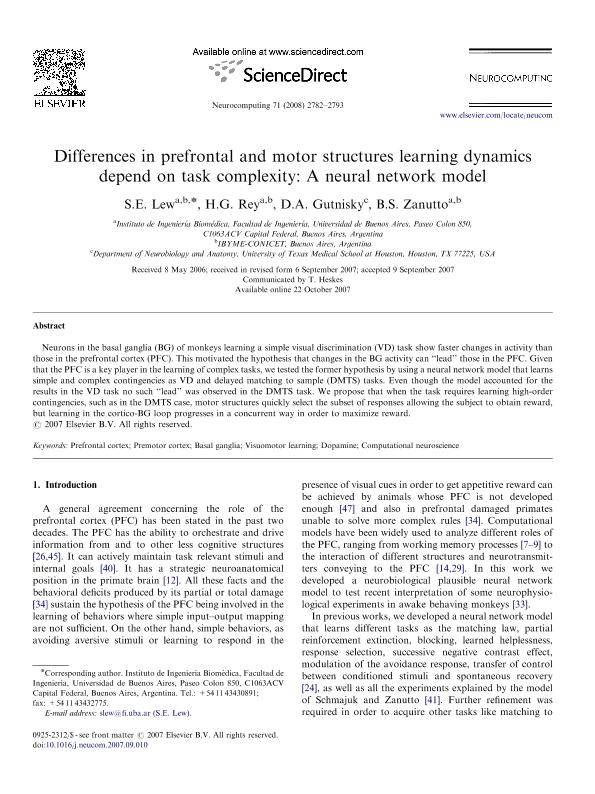Artículo
Differences in prefrontal and motor structures learning dynamics depend on task complexity: a neural network model
Fecha de publicación:
08/2008
Editorial:
Elsevier Science
Revista:
Neurocomputing
ISSN:
0925-2312
e-ISSN:
0925-2312
Idioma:
Inglés
Tipo de recurso:
Artículo publicado
Clasificación temática:
Resumen
Neurons in the basal ganglia (BG) of monkeys learning a simple visual discrimination (VD) task show faster changes in activity than those in the prefrontal cortex (PFC). This motivated the hypothesis that changes in the BG activity can ''lead'' those in the PFC. Given that the PFC is a key player in the learning of complex tasks, we tested the former hypothesis by using a neural network model that learns simple and complex contingencies as VD and delayed matching to sample (DMTS) tasks. Even though the model accounted for the results in the VD task no such ''lead'' was observed in the DMTS task. We propose that when the task requires learning high-order contingencies, such as in the DMTS case, motor structures quickly select the subset of responses allowing the subject to obtain reward, but learning in the cortico-BG loop progresses in a concurrent way in order to maximize reward.
Palabras clave:
Prefontal Cortex
,
Premotor Cortex
,
Basal Ganglia
,
Dopamine
Archivos asociados
Licencia
Identificadores
Colecciones
Articulos(IBYME)
Articulos de INST.DE BIOLOGIA Y MEDICINA EXPERIMENTAL (I)
Articulos de INST.DE BIOLOGIA Y MEDICINA EXPERIMENTAL (I)
Citación
Lew, Sergio Eduardo; Rey, Hernan Gonzalo; Gutnisky, D. A.; Zanutto, Bonifacio Silvano; Differences in prefrontal and motor structures learning dynamics depend on task complexity: a neural network model; Elsevier Science; Neurocomputing; 71; 13-15; 8-2008; 2782-2793
Compartir
Altmétricas




